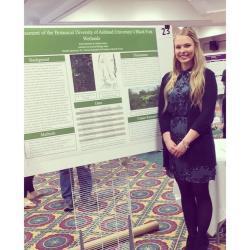Hello everyone! For a biology senior requisite class at my university I have to write up a blog post on a biological topic, and I thought I would share with you all the research I completed last year! I attend Ashland University, a small, private school in Northern Ohio. However, despite being small, the university owns some amazing local wetlands, called the Black Fork Wetlands. As a junior, I was invited to participate on a research team with two of my biology professors, with our main goal being to start a botanical inventory on the plant species of our wetlands.
One of my professors had done prior research in regards to two particular types of birds that nest in our wetlands: the Virginia Rail (Rallus limicola) and the Sora (Porzana carolina). According to his research, the presence of the Virginia Rail and the Sora decreased when the presence of a certain grass increased. Reed Canary Grass (Phalaris arundinacea) (Figures 1 & 2) is considered to be an invasive species in the state of Ohio, and pretty much all of the United States. Originally from Europe or Asia, it aggressively competes with native wetland plants for limited resources, ultimately driving them out of the area. Animals other than the Virginia Rail and Sora are also negatively affected because the grass is not edible, and in the case of the previously mentioned birds, is not quality nesting material. Additionally, Reed Canary Grass often clogs waterways that connect different wetland systems. Unfortunately, it has been established that Reed Canary Grass has made its way to the Black Fork Wetlands. For our botanical inventory, our goal was to determine whether the Reed Canary Grass had eliminated some of the native wetland species, and to gage the current biodiversity of the area.
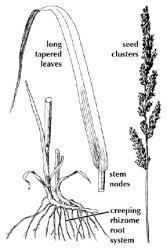
Figure 1: Structure of Reed Canary Grass (www.kingcounty.gov)
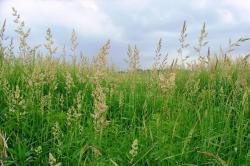
Figure 2: Reed Canary Grass (www.wisconsinwetlands.org)
Figure 3 shows a photo of our wetlands divided into four ponds. It was already established that Reed Canary Grass was present at Pond A, but not at Pond C. We decided that Pond C (Figure 4) was a good representation of the wetland as a whole before the Reed Canary Grass invaded, so we wanted to sample both the woody and herbaceous flora to obtain a sense of what Pond A was like beforehand.

Figure 3: Map of Black Fork Wetlands and corresponding ponds
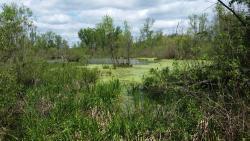
Figure 4: Pond C of Black Fork Wetlands Ashland, OH
We roped off a section of land at Pond C to form a transect from which plant species could be sampled. The transect included both dry land and water in order to create an accurate representation of the pond area as a whole. We then sampled plants from the area, and I took them back to the lab and identified them using various botanical keys. A local botanist then helped us by verifying these identities and using the Floristic Quality Assessment Index (FQAI) to determine the quality of the wetland based on these species. After careful examination, he concluded that Pond C of our wetlands is of high quality; some of these quality species are listed in the Figure 5 below, such as Broadleaf Arrowhead and Bottlebrush Sage.
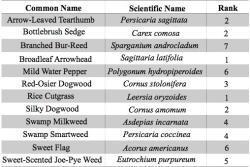
Figure 5: Identified plant species and rankings
It was great news to hear that our wetlands still had portions that were of high quality, but unfortunately this can all change if Reed Canary Grass travels to the untouched parts. Many people have asked me, "Why don't you just get rid of it? Rip it up. Destroy it with chemicals". Well you see, if you rip up the plant and leave even a little bit of its root system, it will just grow back. You could dig up your entire wetland to remove it, but we do not have the time or resources for that. With chemicals you pose the risk of not only eliminating the bad guys, but the good guys too. The whole wetland ecosystem could be disrupted, and that's just not a risk we are willing to take. However, hopefully the university will continue this research we began and continue to sample the area. Transects at the other ponds could be formed so that a more representative sample could be taken of the wetlands as a whole. Perhaps research could also be conducted on plausible ways to decrease or even eliminate the Reed Canary grass in a cost and time-efficient manner that would also be non-disruptive to the other wildlife. Honestly though, in the end I gained a deeper love for plants (didn't think that was possible) and a greater respect for my university because it has invested in these wetlands for the use of faculty and students. How many other students are able to say they mucked around in a smelly wetland in wading boots in 80-degree weather looking at plants all day? Not many, and probably not many would appreciate it, but trust me when I say that I sure did!
